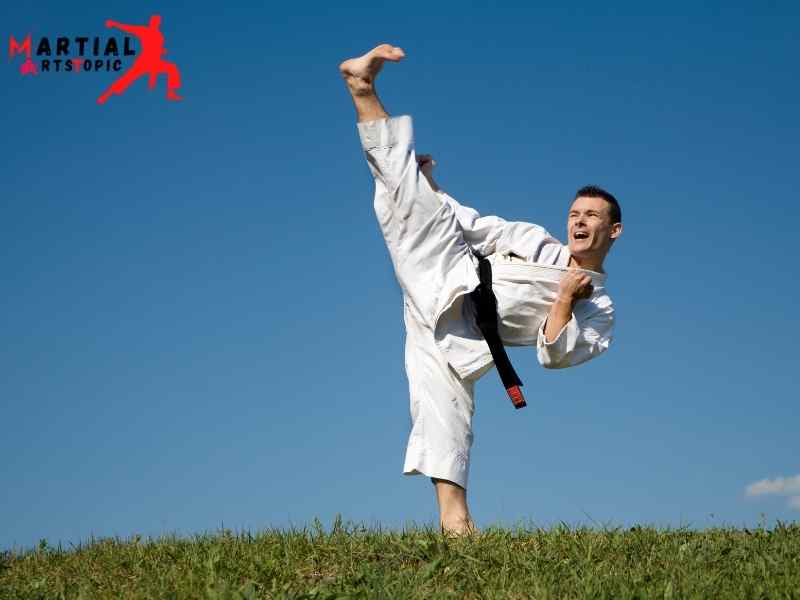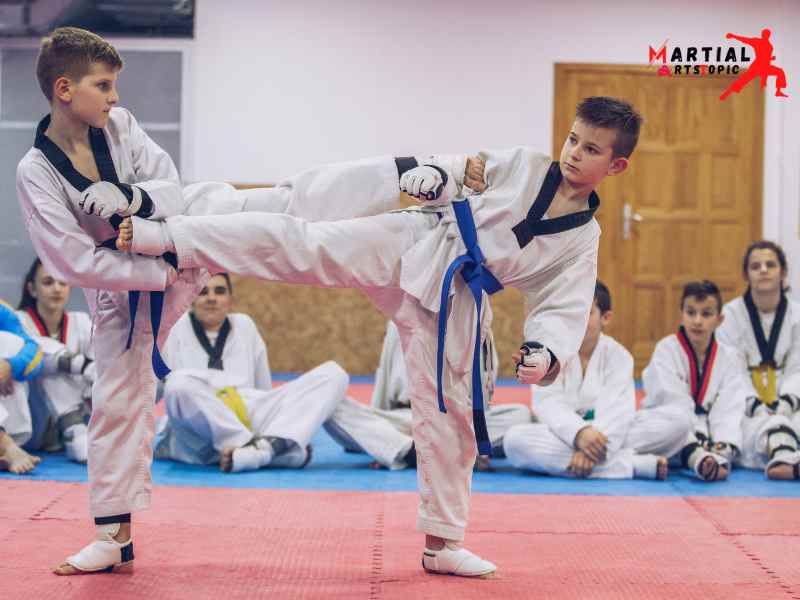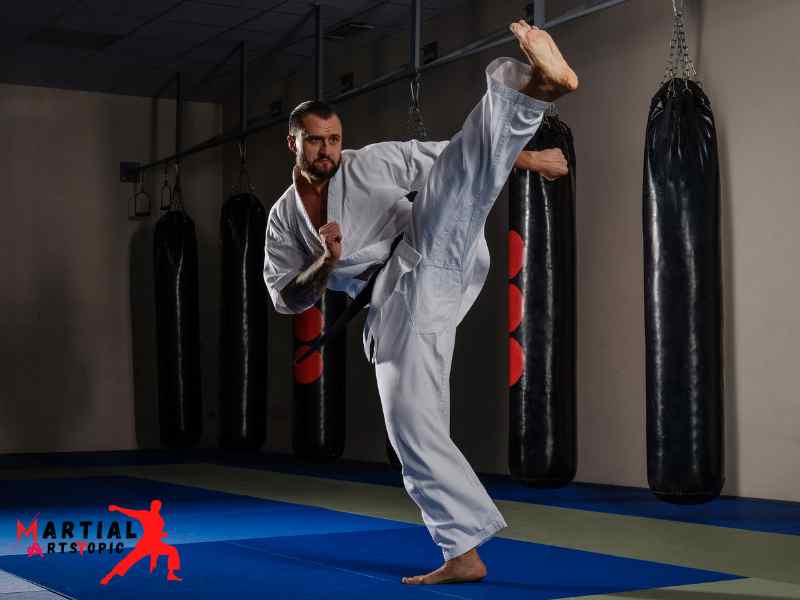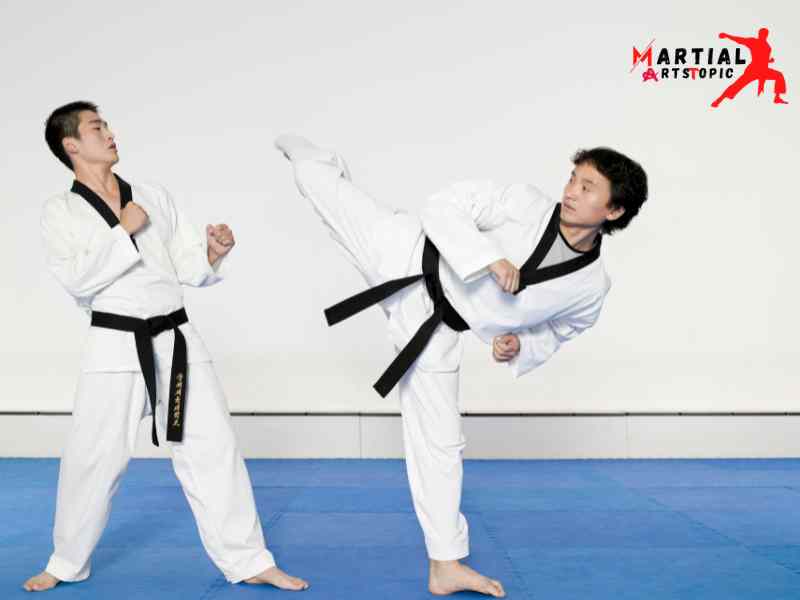
Kata Karate: the Secrets of Traditional Martial Arts
Kata Karate: The Secrets of Traditional Martial Arts In today’s fast-paced world, traditional martial arts have become increasingly popular for their physical and mental benefits. One such discipline that has gained a lot of attention is Kata Karate. This traditional form of martial arts not only teaches self-defense techniques but also focuses on self-discipline, mental fortitude, and spiritual growth. Kata Karate and how it can help you unlock the secrets of traditional martial arts.
What is Kata Karate?
Kata Karate is a form of martial arts that originated in Okinawa, Japan. It involves a series of pre-determined movements, sequences, and techniques performed in a specific pattern. These patterns, known as katas, are passed down from generation to generation and serve as a way to preserve the essence of traditional martial arts.
The Importance of Kata Karate
Kata Karate is more than just a series of movements. It is a way to develop and refine essential martial arts skills. Through the practice of katas, practitioners learn to focus their minds, improve their balance and coordination, and enhance their overall physical fitness. Additionally, Kata Karate promotes discipline, respect, and self-control, values that are deeply rooted in traditional martial arts.
Unlocking the Secrets of Traditional Martial Arts
- Physical Fitness: Kata Karate is a great way to improve your physical fitness. The intricate movements and sequences require strength, flexibility, and endurance. Regular practice of katas can help you build lean muscle, increase your cardiovascular endurance, and improve your overall physical health.
- Mental Fortitude: In Kata Karate, mental fortitude is just as important as physical strength. The repetitive nature of practicing katas helps develop focus, concentration, and discipline. As you strive to perfect each movement, you will learn to overcome challenges, push your limits, and develop a strong mindset.
- Self-Defense Techniques: While Kata Karate is not solely focused on self-defense, it does teach valuable techniques that can be used in real-life situations. By practicing katas, you will learn to execute strikes, blocks, and evasive maneuvers with precision and speed. These skills can be applied in self-defense scenarios, giving you the confidence to protect yourself if needed.
- Spiritual Growth: Kata Karate goes beyond physical and mental benefits; it also promotes spiritual growth. The practice of katas encourages self-reflection, self-awareness, and a deeper connection with oneself. Through the discipline and dedication required to master katas, practitioners can find inner peace and harmony.
How to Get Started
If you are interested in unlocking the secrets of traditional martial arts through Kata Karate, finding a reputable dojo (training center) is essential. Look for a certified instructor who has experience in teaching Kata Karate and a deep understanding of its principles. Regular practice and dedication are key to mastering this ancient art form.
The History and Evolution of Kata in Karate
The History and Evolution of Kata in Karate Kata Karate has been an integral part of traditional martial arts for centuries. This ancient practice is not only a way to hone physical skills but also a means to develop mental focus and discipline. The fascinating history and evolution of Kata in Karate, exploring its origins, significance, and how it has developed over time.
Origins of Kata in Karate
We can trace the origins of Kata back to ancient China, where it was known as “forms” or “taolu.” It initially developed these forms as a way to preserve and transmit martial arts techniques from one generation to another. As Chinese martial arts influenced Karate, Kata became an essential part of its training system.
During the 17th century, Okinawa, a small island in Japan, played a significant role in the development of Kata in Karate. Due to the ban on weapons imposed by the ruling Satsuma clan, Okinawans turned to unarmed combat techniques, which eventually evolved into Karate. To ensure the preservation and secrecy of their martial arts techniques, Karate practitioners began to systemize their knowledge into Kata forms.
Significance of Kata in Karate
Kata Karate holds immense significance in the practice of this martial art. It serves as a comprehensive guide for practitioners, providing a structured sequence of movements that encapsulates various techniques, stances, and strategies. Each Kata has a specific purpose, focusing on specific techniques, such as strikes, blocks, kicks, and footwork.
Apart from physical techniques, Kata also emphasizes mental discipline and concentration. Practitioners must perform each movement with precision, accuracy, and proper breathing, fostering mindfulness and control. By practicing Kata, Karateka (Karate practitioners) develop a deep understanding of the principles behind each technique, enhancing their overall martial arts skills.
Evolution of Kata in Karate

Over time, Kata in Karate has strengthened, incorporating influences from different styles, regions, and masters. As Karate spread across Japan and eventually the world, various schools and organizations developed their own unique sets of Kata. This led to the creation of numerous Kata styles, each with its own distinct characteristics and emphasis.
In the early 20th century, Master Gichin Funakoshi, known as the founder of Shotokan Karate, played a pivotal role in popularizing Kata and establishing a standardized set of forms. His efforts led to the integration of Kata into the curriculum of mainstream Karate schools, making it an integral part of Karate training worldwide.
Today, martial artists of all levels, from beginners to seasoned practitioners practiced Kata Karate. It continues to evolve, with new variations and interpretations being developed by modern masters. While the core principles and techniques remain the same, practitioners add their own flair and personal expression to their Kata performances, allowing for a dynamic and diverse practice.
Kata Karate: Training Tips and Strategies
Kata Karate: Training Tips and Strategies Are you passionate about martial arts and looking to master the art of Kata Karate? Look no further! Training tips and strategies that will take your Kata Karate skills to the next level. Whether you are a beginner or an experienced practitioner, these tips will help you improve your technique, build strength, and enhance your overall performance in Kata Karate.
Kata Karate, also known as traditional forms, is a series of prearranged movements that simulate a fight against imaginary opponents. It is not only a physical exercise, but also a mental discipline that requires focus, concentration, and precision. By mastering Kata Karate, you can develop self-confidence, discipline, and self-defense skills.
Here are some training tips and strategies to help you on your journey to mastering Kata Karate:
- Learn the Basics: Before diving into complex Kata sequences, it is crucial to master the basic stances, punches, kicks, and blocks. Focus on perfecting each movement, paying attention to proper form and technique.
- Practice Regularly: Consistency is key when it comes to Kata Karate. Set aside dedicated practice time each day or week to work on your Kata. Repetition is essential to develop muscle memory and improve your performance.
- Break it down: Break down the Kata into smaller sections and practice each section individually. This will help you master the sequence and allow for focused practice on specific movements that may require improvement.
- Visualize: Visualization is a powerful tool in Kata Karate training. Close your eyes and mentally visualize yourself performing the Kata with precision and fluidity. This mental practice will enhance your muscle memory and improve your overall performance.
- Seek Feedback: Training under the guidance of a skilled instructor is crucial to Kata Karate. They can provide valuable feedback, correct your technique, and guide you towards improvement. Don’t hesitate to ask for feedback and incorporate it into your training.
- Train with Purpose: Each movement in Kata Karate has a purpose. Understand the reasoning behind each technique and focus on executing it with intention. This will help you develop a deeper understanding of the art and improve your performance.
- Strengthen Your Body: Kata Karate requires strength, flexibility, and endurance. Incorporate strength and conditioning exercises into your training routine to build stamina and improve overall physical fitness. This will help you perform the Kata with power and precision.
- Find Your Rhythm: Kata Karate is not just about the movements; it is about the rhythm and flow. Practice coordinating your movements with your breath and find your own rhythm within the Kata. This will enhance the fluidity and grace of your performance.
- Record and Review: Record yourself performing the Kata and review the footage. This will allow you to identify areas for improvement and track your progress over time. Analyzing your performance will help you refine your technique and make necessary adjustments.
- Stay Motivated: Mastering Kata Karate requires dedication and perseverance. Set goals for yourself, celebrate small achievements, and stay motivated throughout your training journey. Remember that progress takes time, and every step forward is a step towards mastery.
Different Styles of Kata in Karate
Different Styles of Kata in Karate Kata is a fundamental aspect of traditional karate. It is a series of prearranged movements that simulate real-life combat situations. Practicing kata helps karateka develop balance, coordination, speed, power, and technique. There are various styles of kata in karate, each with its own unique characteristics and techniques. Different styles of kata in karate.
Shotokan Karate Kata
Shotokan is one of the most popular styles of karate, and it has a wide range of kata. Some of the well-known kata in Shotokan karate include Heian Shodan, Bassai Dai, and Jion. Shotokan kata emphasizes strong, linear movements, and deep stances. Practitioners focus on developing power and precision in their techniques.
Shito-ryu Karate Kata
Shito-ryu is another major style of karate that incorporates a blend of different kata from various karate styles. This style emphasizes fluid and circular movements, with an emphasis on breathing techniques and transitions between stances. Some notable kata in Shito-ryu karate include Seienchin, Saifa, and Nipaipo.
Goju-ryu Karate Kata
Goju-ryu karate is known for its emphasis on close-quarters combat and circular movements. The kata in this style often incorporate breathing techniques and dynamic footwork. Sanchin, Tensho, and Kururunfa are some of the well-known Goju-ryu karate kata.
Wado-ryu Karate Kata
Wado-ryu karate focuses on blending traditional karate with elements of jujitsu. The kata in this style emphasize a combination of soft and hard techniques, with an emphasis on body movement and evasion. Some notable Wado-ryu karate kata include Pinan Shodan, Kushanku, and Niseishi.
Kyokushin Karate Kata
We know the kata in this style, Kyokushin karate is a full-contact style that places a strong emphasis on physical conditioning and powerful techniques. I knew the kata in this style for their explosive movements and strong stances. Taikyoku Sono Ichi, Sanchin, and Gekisai Dai are some of the kata practiced in Kyokushin karate.
Goju-ryu Karate Kata

Goju-ryu karate is known for its emphasis on close-quarters combat and circular movements. The kata in this style often incorporate breathing techniques and dynamic footwork. Sanchin, Tensho, and Kururunfa are some of the well-known Goju-ryu karate kata.
Remember to continue practicing kata regularly, as it is through repetition and dedicated training that you will truly master the art of karate.
Types of Kata in Karate
Kata, a fundamental aspect of Karate, is a structured sequence of movements designed to simulate a fight against imaginary opponents. It is a form of practice that helps Karate practitioners develop and refine their techniques, stances, and overall performance. The different types of Kata in Karate and their significance in training.
- Taikyoku Kata: Taikyoku Kata, also known as “First Cause,” is a series of simplified movements suitable for beginners. It serves as an introduction to Karate, focusing on basic stances, blocks, and strikes. Taikyoku Kata lays the foundation for further advancement in karate practice.
- Heian Kata: Heian Kata, meaning “peaceful mind,” is a set of five katas (Heian Shodan, Heian Nidan, Heian Sandan, Heian Yondan, and Heian Godan) practiced by all Karateka. These katas introduce more complex techniques, including combinations, turns, and jumps. They often regarded heian Kata as the bridge between beginner and intermediate levels in Karate training.
- Tekki Kata: Tekki Kata, also known as Naihanchi Kata, is a set of three katas (Tekki Shodan, Tekki Nidan, and Tekki Sandan) that focus on strong stances and linear movements. These katas emphasize core stability, balance, and control. They often consider Tekki Kata advanced due to its intricate footwork and strong defensive techniques.
- Bassai Kata: Bassai Kata, meaning “extract from a fortress,” is a powerful form that emphasizes powerful strikes, blocks, and turns. It teaches Karateka how to generate explosive power and maintain a solid defense. Bassai Kata is valued for its ability to enhance strength and mental focus.
- Kanku Kata: Kanku Kata, meaning “to view the sky,” is a dynamic and visually appealing form that incorporates various techniques, including punches, kicks, and jumps. It emphasizes fluidity, grace, and precision. Kanku Kata showcases the practitioner’s ability to transition smoothly between distinct movements while maintaining control and accuracy.
- Gojushiho Kata: Gojushiho Kata, meaning “fifty-four steps,” is an advanced kata known for its intricate movements and complex sequences. It requires a high level of concentration, balance, and precision. Gojushiho Kata challenges Karateka to combine strength and agility while executing a wide range of techniques.
- Empi Kata: Empi Kata, meaning “flight of the swallow,” is a kata that focuses on fast, explosive movements. It incorporates quick footwork, swift strikes, and sudden changes in direction. Empi Kata trains Karateka to develop speed, agility, and the ability to swiftly counterattack.
- Jion Kata: Jion Kata, named after the Jion-ji temple, is a traditional kata that emphasizes strong, linear movements. It features powerful strikes, blocks, and kicks while maintaining a strong and focused stance. Jion Kata emphasizes the importance of precision, control, and mental discipline.
- Nijushiho Kata: Nijushiho Kata, meaning “twenty-four steps,” is an advanced kata that combines power, precision, and complex techniques. It incorporates a wide variety of techniques, including kicks, punches, blocks, and grappling movements. Nijushiho Kata challenges Karateka to perform intricate movements with speed, strength, and accuracy.
Benefits of Practicing Kata Karate
Benefits of Practicing Kata KarateKata Karate is a traditional Japanese martial art that focuses on the practice of forms, or kata. These forms are a specific sequence of movements that simulate various combat scenarios. While the physical aspect of Kata Karate is impressive, it also offers a range of benefits that extend beyond self-defense techniques. The numerous advantages of practicing Kata Karate and how it can positively impact your life.
- Physical Fitness:Kata Karate is a physically demanding martial art that requires strength, agility, and flexibility. Through regular practice, practitioners can improve their cardiovascular endurance, muscular strength, and overall physical fitness. The various movements and stances involved in Kata Karate help to develop core strength, balance, and coordination.
- Self-Defense Skills: One of the primary goals of Kata Karate is to equip individuals with effective self-defense techniques. The practice of kata enables practitioners to develop quick reflexes, strategic thinking, and the ability to anticipate and respond to original attacks. By mastering the movements and techniques, individuals can feel more confident in their ability to protect themselves in real-life situations.
- Mental Focus and Discipline:Practicing Kata Karate requires intense mental focus and discipline. It must execute each movement with precision and concentration, demanding complete engagement of the mind. Regular practice of Kata Karate cultivates discipline, perseverance, and self-control. This mental discipline can then be applied to other areas of life, such as work, academics, and personal relationships.
- Stress Relief:Engaging in physical activity, such as practicing Kata Karate, has been proven to reduce stress levels. The intense physical exertion releases endorphins, which are natural mood boosters. The repetitive nature of kata practice also promotes a meditative state, allowing practitioners to clear their minds and focus solely on the present moment. This can significantly reduce stress and anxiety, leading to improved mental well-being.
- Improved Confidence and Self-Esteem: The mastery of Kata Karate techniques and the progress made through diligent practice can greatly enhance an individual’s self-confidence and self-esteem. As practitioners see improvements in their skills, they develop a sense of accomplishment and belief in their abilities. This newfound confidence can positively impact various aspects of life, including personal relationships, academic performance, and career success.
- Increased Focus and Concentration: Kata Karate requires practitioners to memorize and perform complex sequences of movements with precision. This enhances concentration and focus, as it must execute every move with complete attention to detail. The mental engagement of Kata Karate practice can improve concentration levels, making it easier to stay focused in other areas of life, such as work or academics.
- Social Interaction and Community:Practicing Kata Karate provides an opportunity for social interaction and community building. Training in a dojo (training hall) allows individuals to connect with like-minded individuals who share a common interest in martial arts. This supportive community can foster friendships, provide motivation, and create a sense of belonging.
How to Learn and Practice Katas
Kata Karate, a fundamental component of traditional martial arts, is a powerful practice that allows practitioners to develop precision, focus, and technique. Whether you’re a beginner or an experienced martial artist, honing your katas is essential for mastering the art of Kata Karate. In this comprehensive guide, we will walk you through the steps to effectively learn and practice katas, providing you with the tools you need to excel in this ancient discipline.
Understanding the Essence of Katas
To truly appreciate the significance of katas, it’s important to understand their purpose. Katas are a series of choreographed movements and techniques that simulate combat scenarios. They serve as a way to internalize and refine the techniques, forms, and principles of Kata Karate. By practicing katas, you’ll not only improve your physical abilities, but also developmental focus, discipline, and self-awareness.
Finding a Qualified Instructor
Learning katas requires proper guidance from a qualified instructor. Look for a reputable martial arts school or dojo that offers Kata Karate classes. An experienced instructor will teach you the correct techniques, help you understand the underlying philosophy, and provide valuable feedback to improve your performance. Learning from a skilled instructor will ensure that you start off on the right foot and progress effectively.
Start with Basic Katas
Beginners should start with basic katas to build a solid foundation. Fundamental katas such as Heian Shodan, Taikyoku Shodan, or Kihon Kata are often taught at the beginner level. These katas focus on developing proper stances, body movements, and basic strikes. Practice these katas repeatedly until the movements become second nature.
Break Down the Movements
To truly master a kata, it’s important to break down the movements into smaller components. This allows you to understand the mechanics, transitions, and applications of each technique. Take your time and practice each movement with precision and control. Pay attention to details such as footwork, hand positions, and body alignment. By mastering each individual movement, you’ll be able to seamlessly string them together in a fluid and powerful manner.
Practice Regularly
Consistency is key when it comes to learning and practicing katas. Set aside dedicated time for practice and stick to a regular training schedule. Aim for at least three to four practice sessions per week, gradually increasing the intensity and duration as you progress. Regular practice will not only enhance your physical abilities but also improve your focus, concentration, and overall martial arts skills.
Visualize Real Combat Situations
While practicing katas, it’s essential to visualize real combat situations. Imagine yourself in a sparring match or self-defense scenario, applying the techniques and movements from the katas. Visualizing real-life situations will enhance your understanding of the practical applications of each movement and improve your ability to react quickly and effectively.
Seek Feedback and Adjustments
To continuously improve, seek feedback from your instructor and fellow practitioners. They can provide valuable insights, correct any mistakes, and suggest adjustments to enhance your performance. Be open to constructive criticism and actively work on refining your techniques based on the feedback you receive. Remember, the journey of learning katas is a lifelong process, and seeking guidance from others is crucial for growth.

How to Get Started with Kata Karate
How to Get Started with Kata Karate Are you interested in learning the ancient martial art of Kata Karate? Look no further! We will walk you through the steps to get started with Kata Karate. Whether you are a beginner or have some experience in martial arts, this article will provide you with all the information you need to kick-start your journey in Kata Karate.
Step 1: Find a Qualified Instructor
The first step to getting started with Kata Karate is finding a qualified instructor. Look for a reputable martial arts school or dojo that offers Kata Karate classes. A good instructor will not only teach you the techniques but also guide you through the principles and philosophy of Kata Karate. Remember, having a knowledgeable teacher is crucial for your progress and growth in this martial art.
Step 2: Start with the Basics
Once you have found a qualified instructor, it’s time to start learning the basics of Kata Karate. Beginners often begin with basic stances, punches, kicks, and blocks. These fundamental movements will lay the foundation for more advanced techniques in the future. Practice regularly and focus on mastering each movement before moving on to the next one. Consistency and dedication are key to progress in Kata Karate.
Step 3: Understand the Kata
Kata Karate consists of a series of predefined movements called kata. Each kata has its own unique sequence of techniques and represents different aspects of combat. It is important to understand the purpose and meaning behind each kata. Take the time to study and analyze the movements, paying attention to the details. Understanding the rationale behind each technique will help you improve your execution and overall performance.
Step 4: Practice, Practice, Practice
The saying “practice makes perfect” holds true for Kata Karate. Regular practice is essential for mastering the techniques and improving your skills. Set aside dedicated practice time and create a consistent training schedule. Make sure to focus on proper form, breathing, and timing. Practice your katas in front of a mirror, paying attention to your posture and alignment. The more you practice, the more fluid and precise your movements will become.
Step 5: Test Your Skills
Once you have gained confidence in your Kata Karate skills, it’s time to put them to the test. Participate in tournaments or demonstrations to showcase your abilities. This will not only provide you with valuable feedback but also help you gauge your progress. Competition can be a motivating factor and push you to improve and refine your techniques further.
Step 6: Embrace the Journey
Getting started with Kata Karate is just the beginning of a lifelong journey. Embrace the process and enjoy every step along the way. Remember, Kata Karate is not just about physical techniques; it is also about personal growth, discipline, and self-improvement. Stay committed, be patient with yourself, and continue to challenge your limits.
Conclusion
Kata Karate is an essential component of traditional martial arts training. It serves as a way to practice and refine techniques, developmental focus and discipline, and pay homage to the history and philosophy of Karate. Through dedicated practice, practitioners can not only improve their physical abilities but also gain a deeper understanding of the art form and themselves. Whether it is for self-defense, physical fitness, or personal growth, Kata Karate offers a unique and valuable experience for individuals of all ages and skill levels. Embracing the principles and techniques of Kata Karate can lead to a lifelong journey of self-improvement and mastery in the martial arts.
